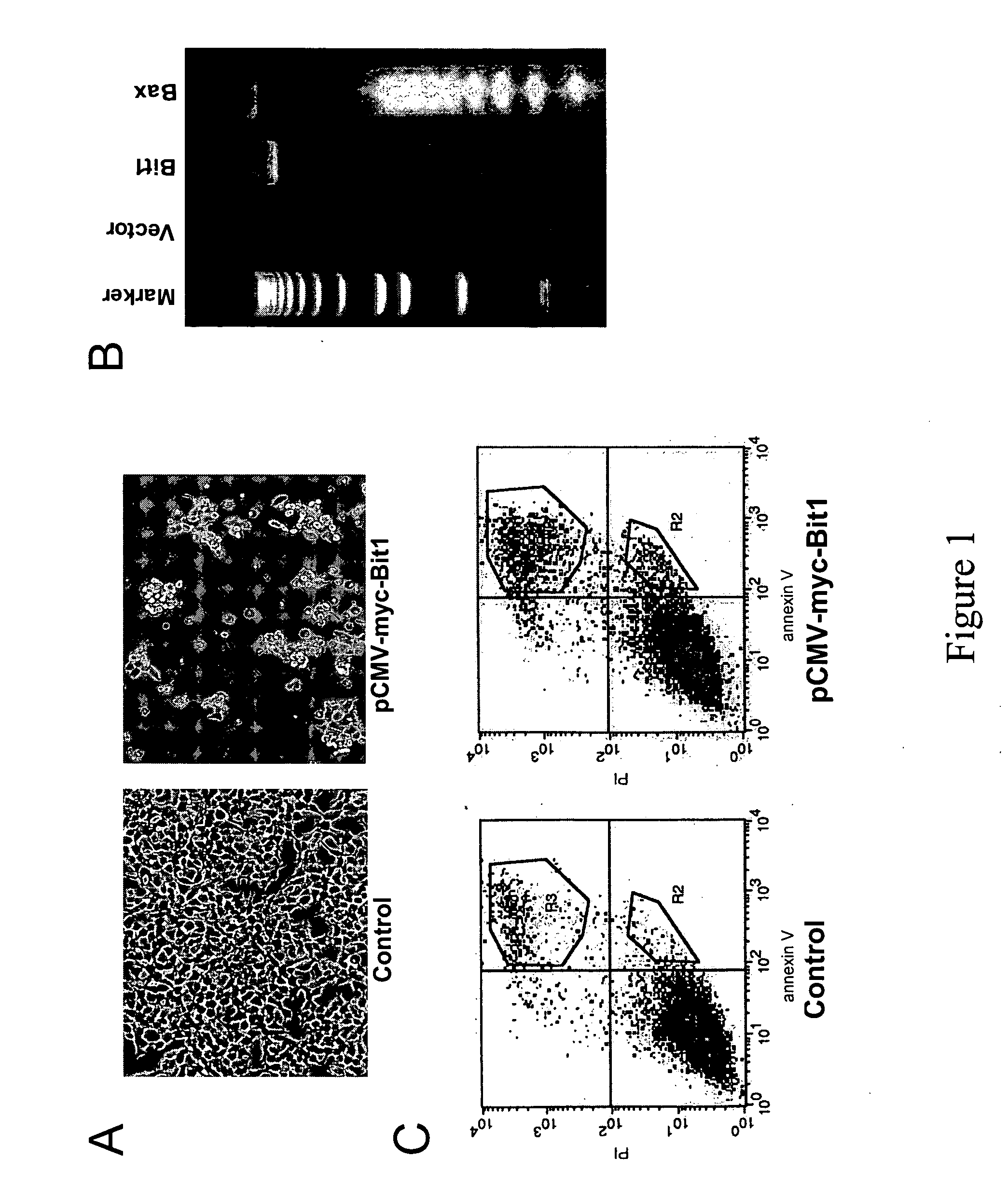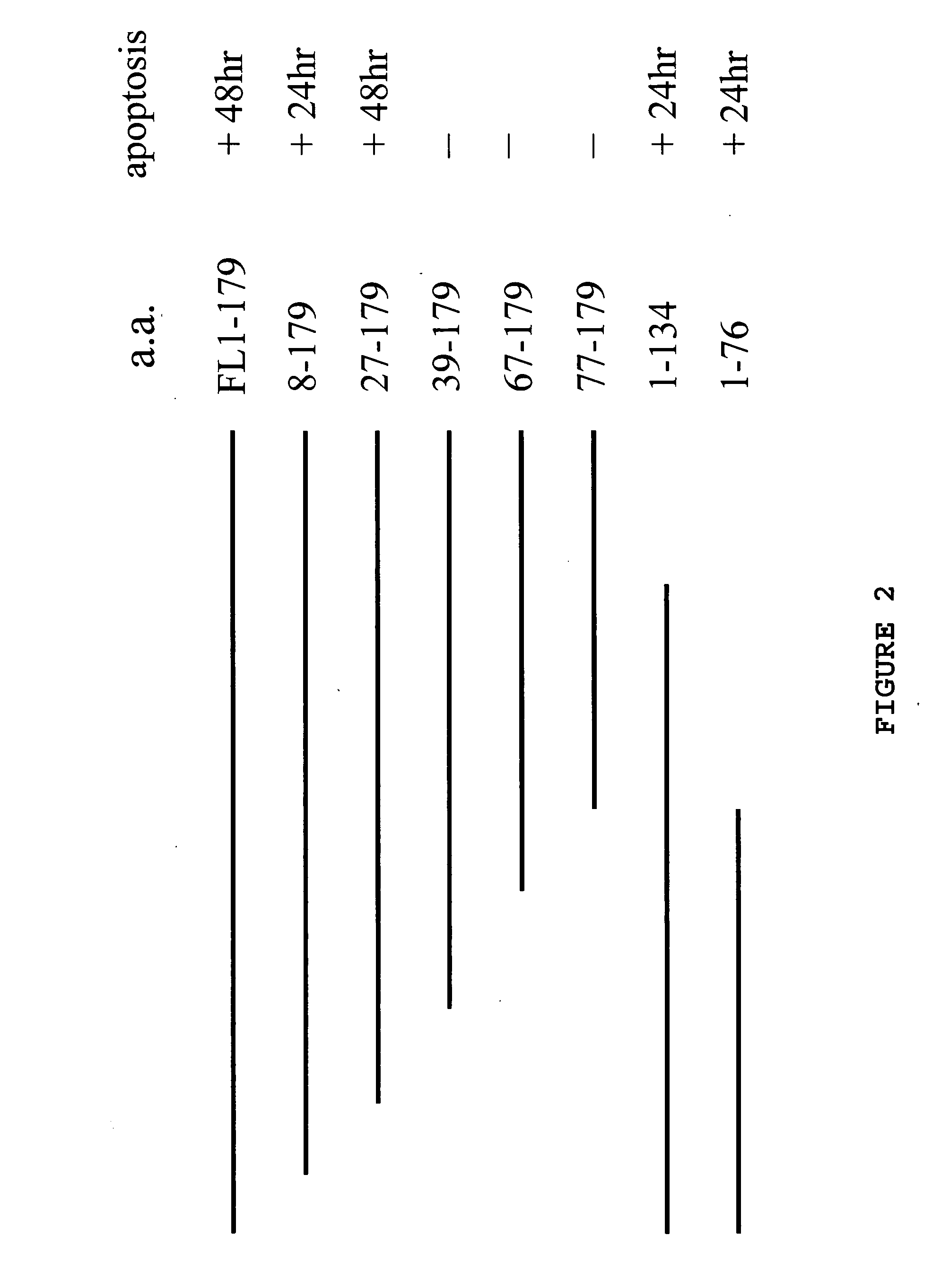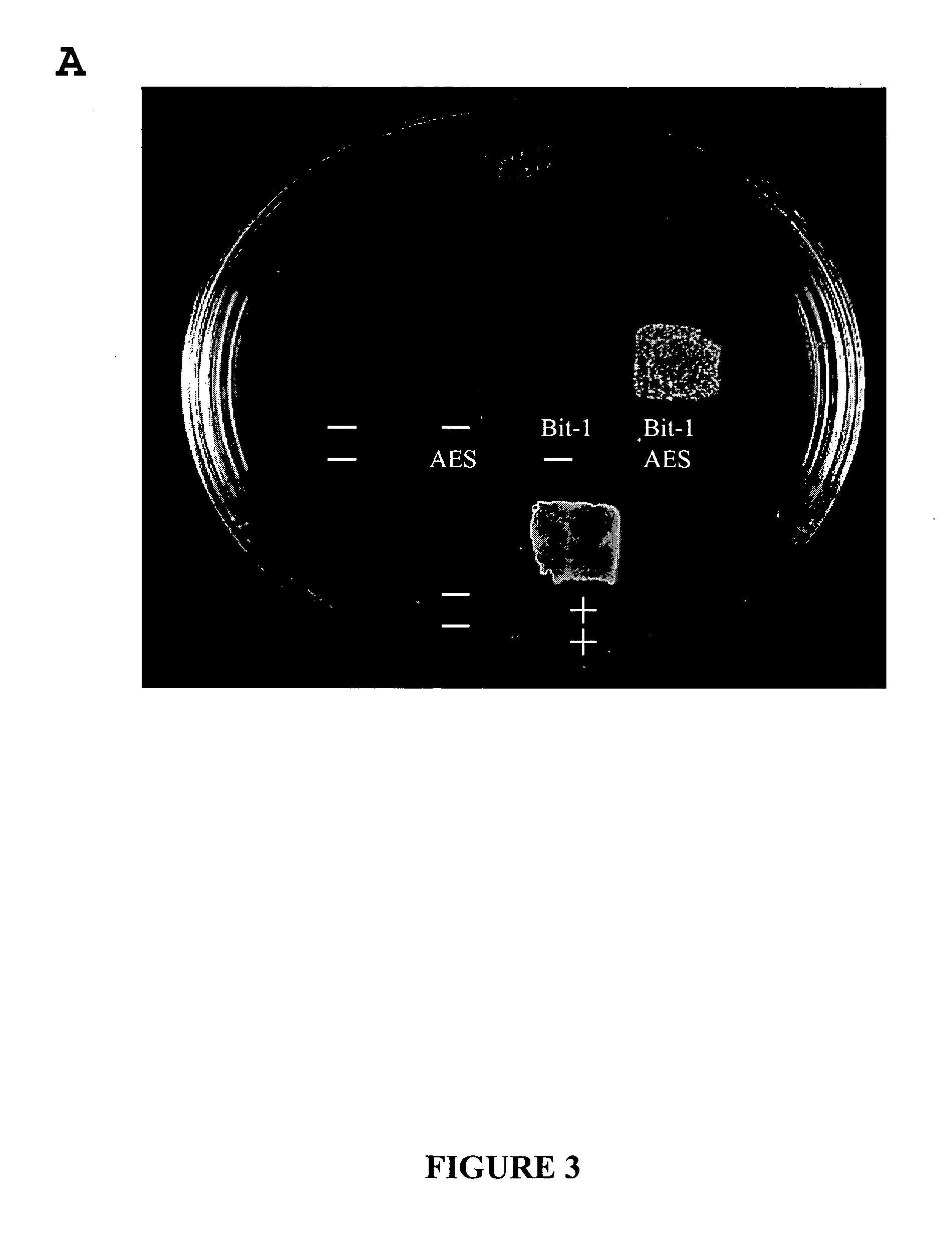Methods of modulating cell death based on the Bit1/AES regulatory pathway
a cell death and regulatory pathway technology, applied in the field of molecular biology and molecular medicine, can solve the problems of unintended neuronal cell death, inflammation and undesirable consequences,
- Summary
- Abstract
- Description
- Claims
- Application Information
AI Technical Summary
Benefits of technology
Problems solved by technology
Method used
Image
Examples
example i
Identification of Bit1
[0163] This example describes isolation of a Bit1 clone based on regulation of Bcl-2 expression.
[0164] An expression cloning strategy was used to identify genes that can be involved in integrin-mediated regulation of Bcl-2 expression. To pursue this strategy, the integrin-Bcl-2 pathway was disabled by truncating the α5 integrin cytoplasmic domain (Matter and Ruoslahti, J. Biol. Chem. 276:27757-27763 (2001)). These cells (CHO-B2 / α5Δcβ1) were cotransfected with a cDNA library and a reporter containing a green fluorescent protein (GFP) cDNA under control of the Bcl-2 promoter. Fluorescent cells were selected from the cotransfections, yielding five cDNA clones that produced increased GFP expression. Of these clones, two had multiple stop codons, and two were in the antisense orientation. The remaining clone, designated Clone-3, contained a 423 base pair open reading frame, which represented the 3′ portion of a 537 base pair open reading frame in a gene denoted CG...
example ii
Bit1 Interacts with the Groucho-Related Protein, AES
[0172] This example demonstrates that the Groucho-related protein, AES, can bind Bit1.
[0173] To explore the mechanism whereby Bit1 induces cell death, a yeast-two-hybrid screening assay was performed to search for binding partners for the Bit1 protein. Full-length Bit1 cDNA was fused to the Gal4 DNA-binding domain in the pGBKT7 vector and used as bait; a human fetal brain cDNA expression library fused to the Gal4 transcriptional activation domain was screened in cells expressing the Bit1 / GAL4 DNA-binding domain fusion. Approximately one million transformants from the cDNA library were screened, and about 100 clones positive for both nutritional selection and α-galactosidase activity were obtained. Nucleotide sequence determination and comparison with the GenBank database (National Center for Biotechnology Information) revealed thirty clones that encoded human AES.
[0174] AES is approximately 50% identical to the amino-terminal re...
example iii
AES is Part of a Bit1 Apoptotic Pathway
[0184] This example demonstrates that AES enhances Bit1-mediated apoptosis.
[0185] AES was assayed for pro-apoptotic activity in CHO cells transfected with a green fluorescent protein (GFP)-AES fusion protein. As seen in FIG. 4A, CHO cells receiving AES, as indicated by GFP fluorescence, died within 48 hours. GFP fluorescence (right panels) showed that the rounded-up cells predominantly were cells expressing AES. However, in HEK 293 cells, which express no detectable Bit1 by immunohistochemistry or Northern analysis, transfection of AES alone was not apoptotic. These results indicate that AES pro-apoptotic activity requires co-expression of Bit1.
[0186] Furthermore, apoptosis was measured in cells transfected with Bit1 (5 μg DNA), AES (5 μg DNA) or both (5 μg each). Rounded up cells expressing GFP were scored as dead cells 24 and 48 hours after the transfection. As shown in FIG. 4B, co-transfection of AES with Bit1 accelerated apoptosis in CHO...
PUM
 Login to View More
Login to View More Abstract
Description
Claims
Application Information
 Login to View More
Login to View More - R&D
- Intellectual Property
- Life Sciences
- Materials
- Tech Scout
- Unparalleled Data Quality
- Higher Quality Content
- 60% Fewer Hallucinations
Browse by: Latest US Patents, China's latest patents, Technical Efficacy Thesaurus, Application Domain, Technology Topic, Popular Technical Reports.
© 2025 PatSnap. All rights reserved.Legal|Privacy policy|Modern Slavery Act Transparency Statement|Sitemap|About US| Contact US: help@patsnap.com



